This post is the first in a series I’m hoping to write about small museums and libraries, their histories and collections. They will predominantly be in Melbourne and surrounds, but I’ll add the odd international one too. These sorts of posts give me the excuse to explore my city and my state. To find new ways to look at the places I’ve probably driven or walked past hundreds of times and to explore the fascinating small pieces of history that they hold.
I am beginning with the Gothic Bank in Melbourne and the banking museum that is underneath the building.
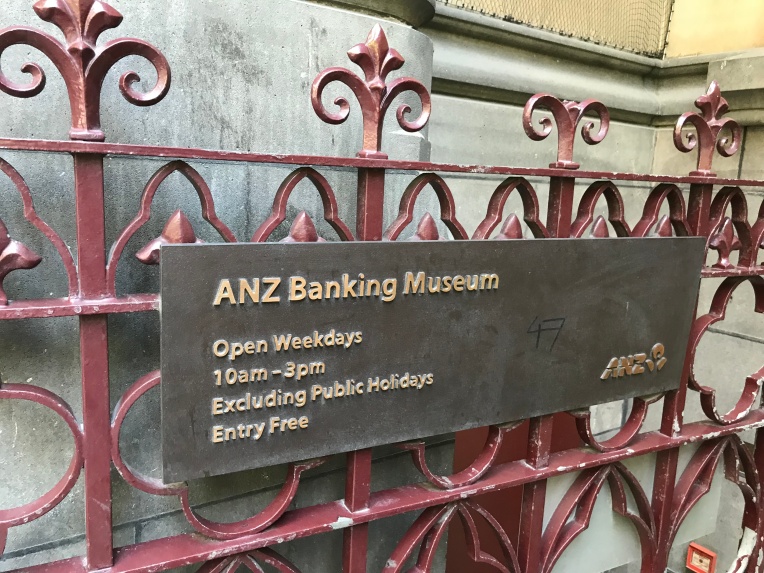
The banking museum itself is under the gothic bank in a space that was used for many years by Australia Post. It was first opened in May 1985. It was part of the commemoration of the 150th anniversary of a Royal Charter which was granted to the Bank of Australasia, which was one of the banks from which ANZ originates. The museum was significantly refurbished in 2007, when ANZ redesigned the layout of the exhibits and updated the content.
While I was unable to take any pictures inside the museum it is a fascinating little institution. It tells the story of banking in Australia, beginning with the indigenous economy and going right up until the 21st century. I actually learnt a lot that I didn’t know.
For example:
From 1817 until 1910 Australian banks issued the bank notes. In 1910 the Commonwealth took over with the introduction of the Australian Note Act.
In World War I close to half the staff of the Union and Australian banks volunteered. Women were employed to fill the vacancies but they weren’t allowed to handle cash or deal with the customers.
The museum is open from 10-4 (traditional bankers hours) on weekdays and entry is free.
Now while the museum itself is interesting it is the building that it stands in that for me was more fascinating. As a medievalist living in Melbourne, I don’t get many chances to see medieval architecture and while the bank and its interior is Victorian Gothic, rather than the real thing, it is still very lovely.
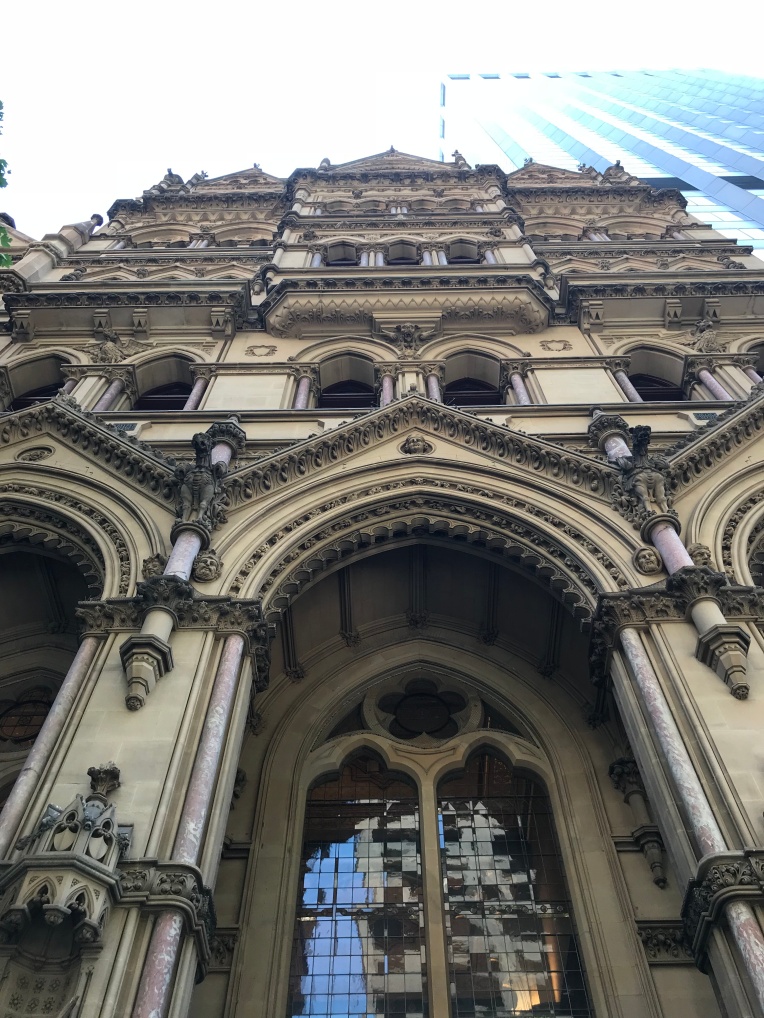
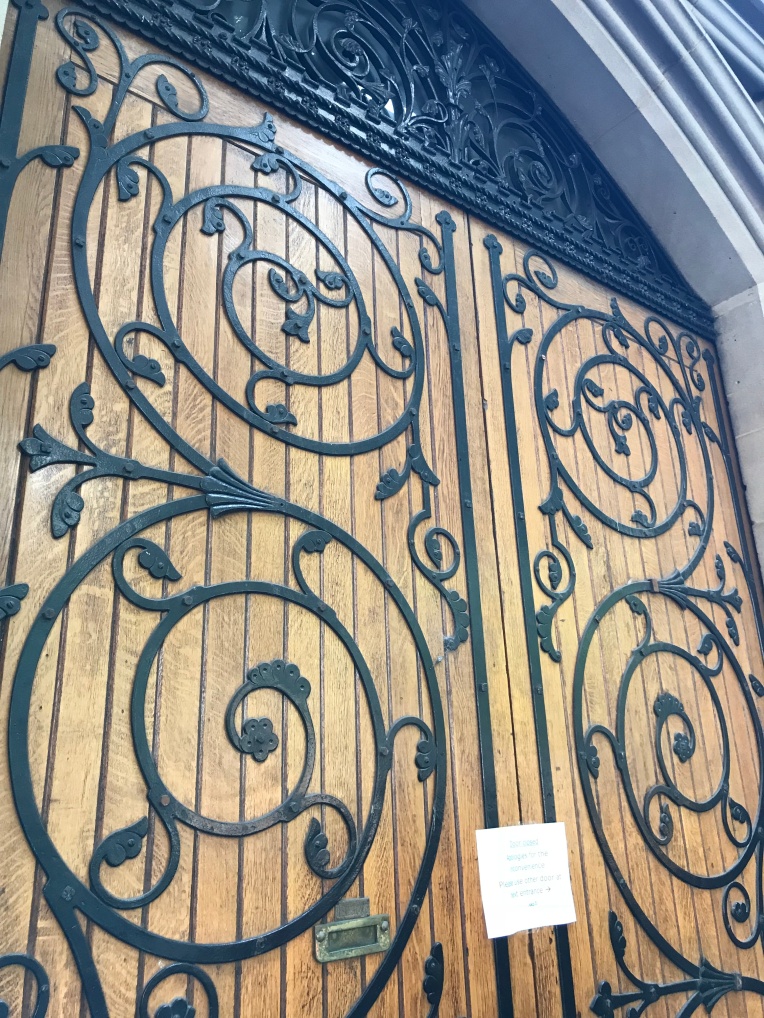
The bank was a collaboration between banker Sir George Verdon and architect William Wardell. Verdon was appointed General Manager of the English, Scottish and Australian Bank (which is now part of ANZ) in 1872. In 1881 he invited 3 architects to submit designs for a new headquarters in Australia. Wardell was successful. Work began in 1883 and the final cost was just over 77 000 pounds.
I especially like the attention to detail
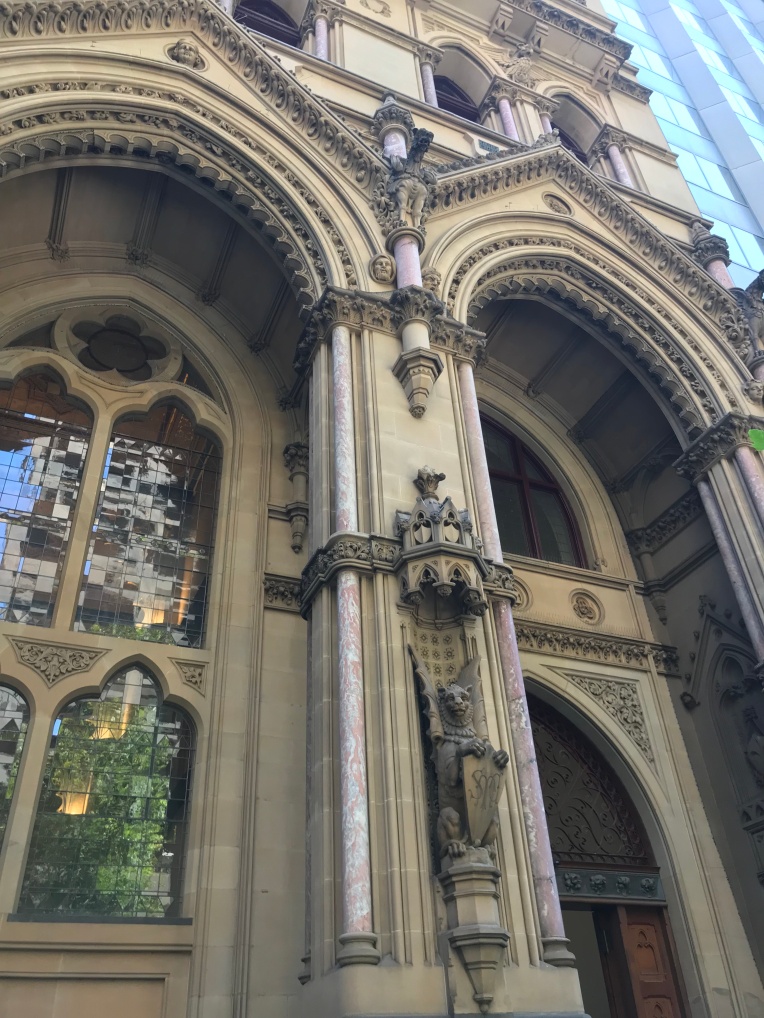
 And the gargoyles.
And the gargoyles.
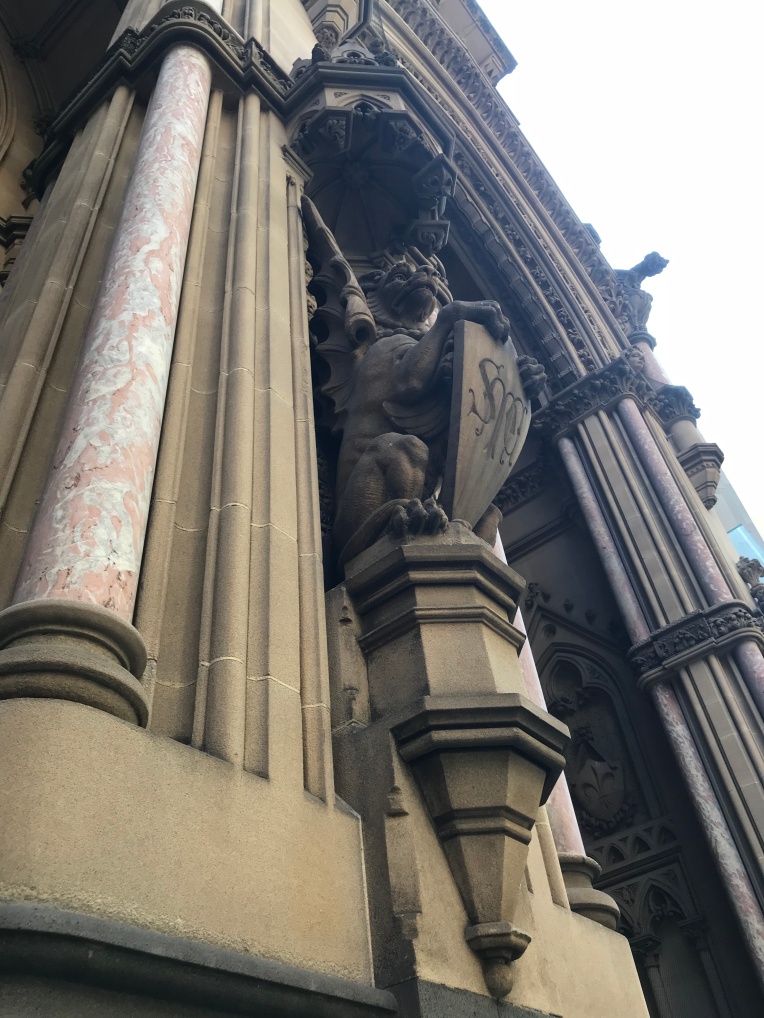 All buildings should have at least one gargoyle.
All buildings should have at least one gargoyle.
As magnificent as the exterior is, it is the interior that really shines

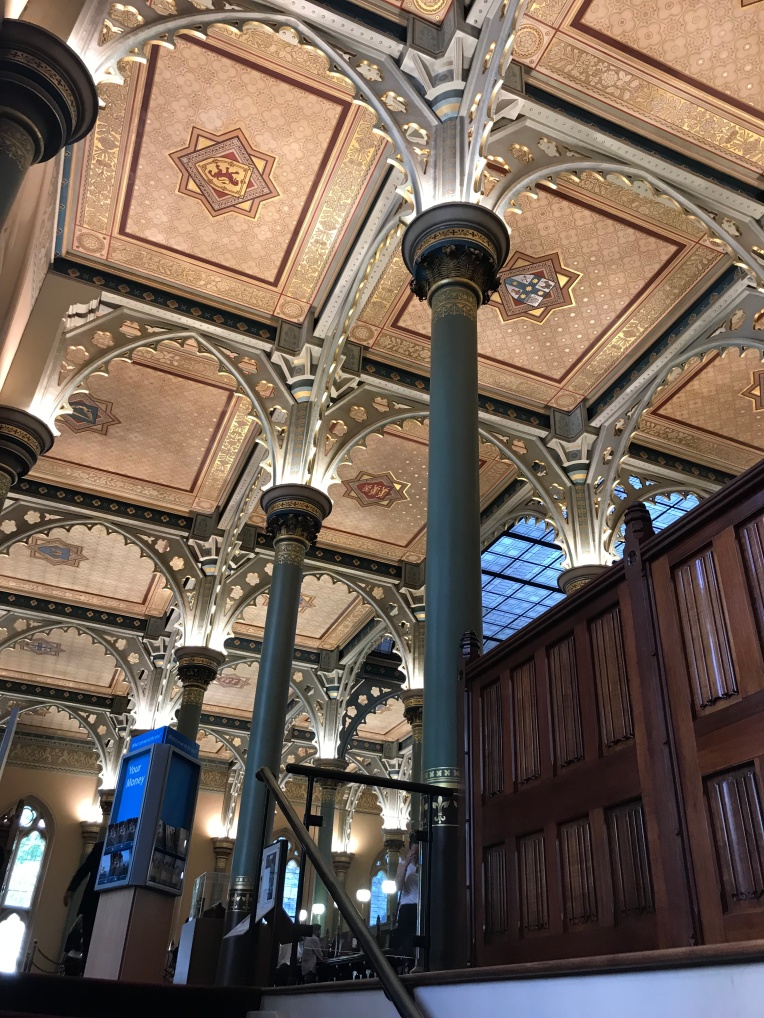 The columns and brackets are cast iron which were made in a foundry in Carlton. They were covered with canvas, fixed with white lead and cement and had five coats of oil paint. The ceiling was hand painted and gilded. In the centre of each panel are the shields and arms of England, Scotland and Australia as well as the arms of the bank and the arms of the main cities in which it operated.
The columns and brackets are cast iron which were made in a foundry in Carlton. They were covered with canvas, fixed with white lead and cement and had five coats of oil paint. The ceiling was hand painted and gilded. In the centre of each panel are the shields and arms of England, Scotland and Australia as well as the arms of the bank and the arms of the main cities in which it operated.
The sky light is a later addition and the banking room was expanded in the 1920s to include the entrance to the former stock exchange building.
The gothic bank does not stand alone. The stock exchange building was added in 1891 with architect William Pitt winning a design competition in 1888. The vestibule of the stock exchange, most of the actual work went on upstairs, is an impressive 20m by 15m. It contains six Harcourt granite columns which weigh between 16 and 20 tonnes. They are capped by white Tasmanian marble. They were transported all the way from Bendigo by teams of 30 horses. It is unsurprisingly known as the cathedral room.
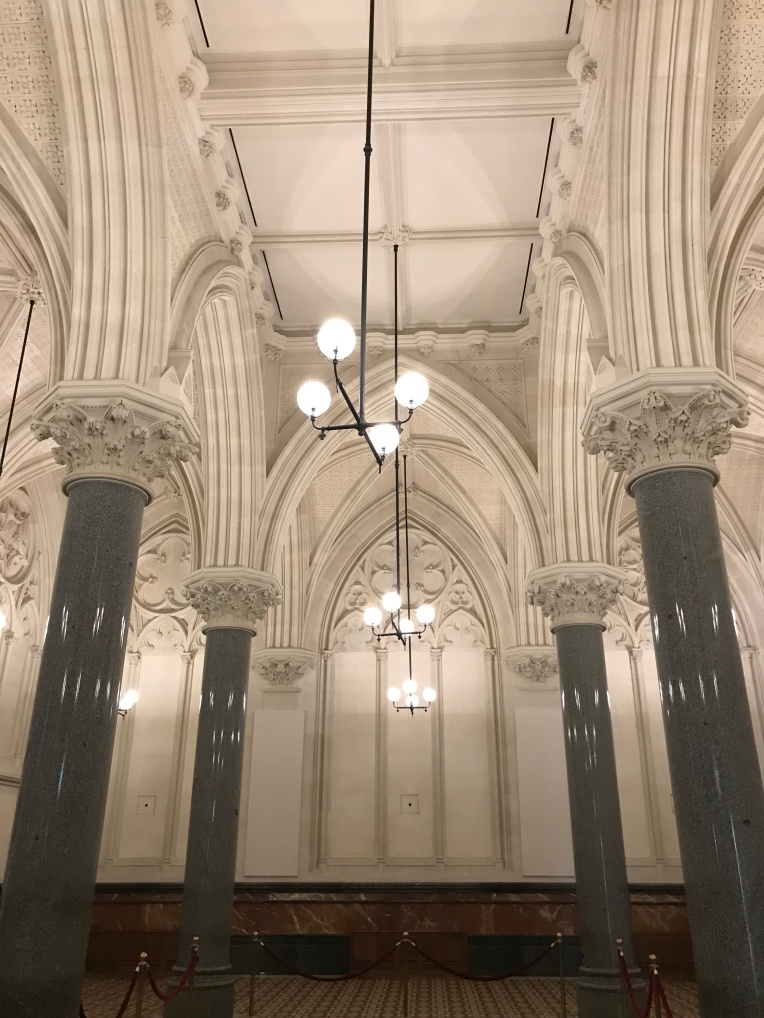 The details on the walls are truly impressive
The details on the walls are truly impressive
 The beautiful tiled floor is not original but it was based on the original colours and patterns.
The beautiful tiled floor is not original but it was based on the original colours and patterns.
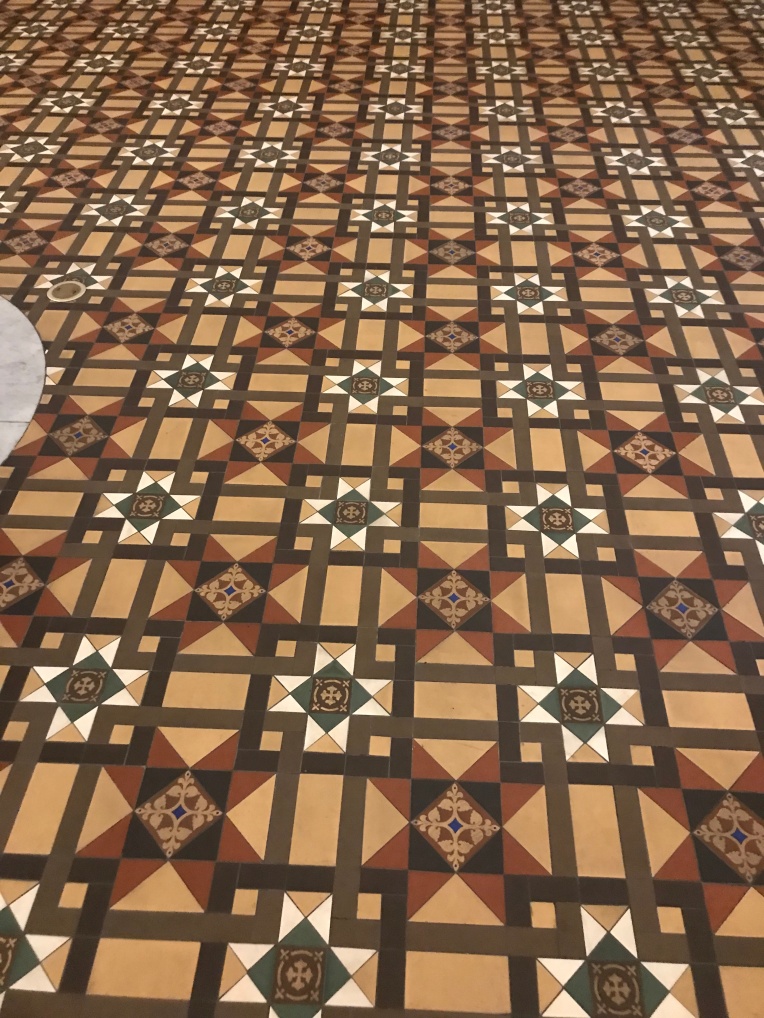 There is also a magnificent stained glass window. Up the very top you can see a miner ‘panning off’ which is meant to represent the origins of the wealth of Victoria. The central figure is a woman representing ‘labour’. The window also depicts the coats of arms of both Britain and Australia and symbols of the four divisions of the globe.
There is also a magnificent stained glass window. Up the very top you can see a miner ‘panning off’ which is meant to represent the origins of the wealth of Victoria. The central figure is a woman representing ‘labour’. The window also depicts the coats of arms of both Britain and Australia and symbols of the four divisions of the globe.
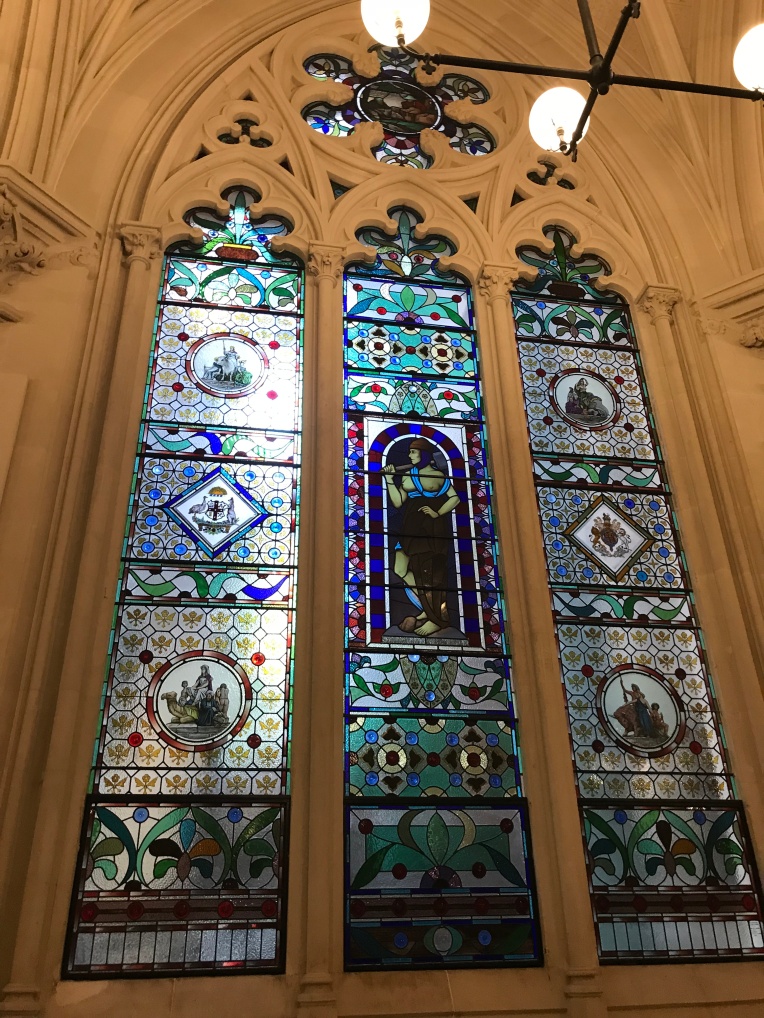
There is also other decorative stained glass work.
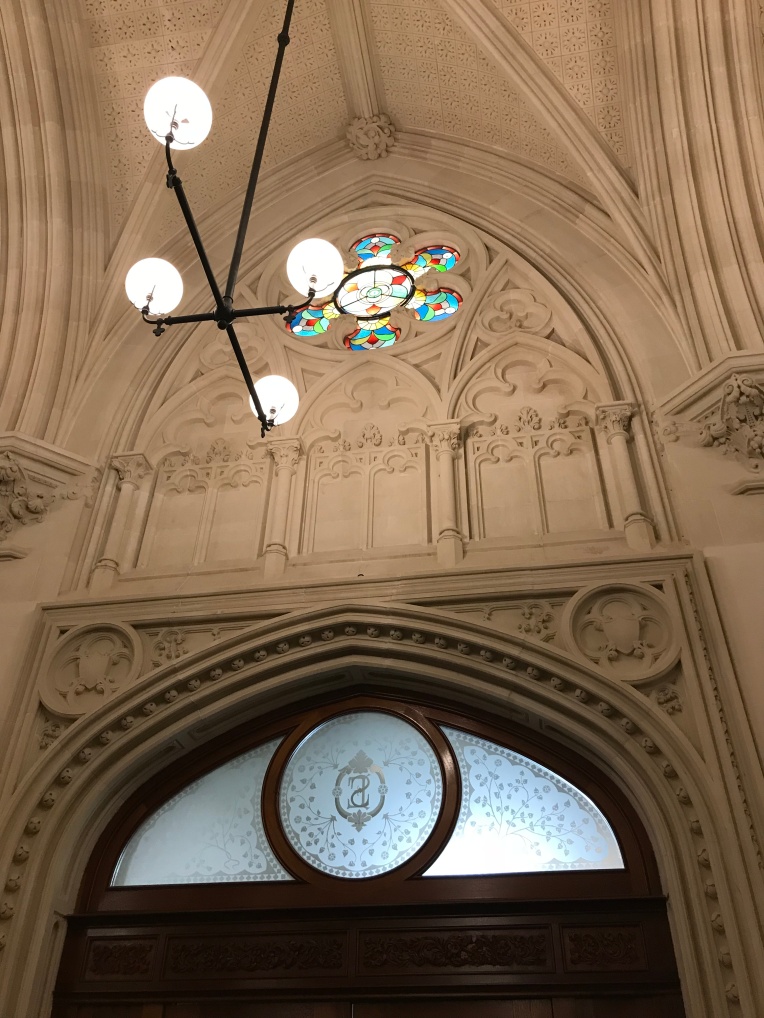
The other building constructed at the same time as the stock exchange is the Melbourne Safe Deposit. It was also designed by William Pitt and was completed by 1890. It is six stories above the ground, but there is a vault beneath it which holds 3000 safes. The floor was concrete which was laid directly onto rock. The walls were 1m thick. The actual strong room was raised off the floor and was built of wrought iron boiler plate and it was lined with un-drillable steel. The whole thing weighed nearly 200 tons. It was the first safe deposit building in Australia. It is still in use today. It is not open to the public sadly, but it is pretty incredible from the outside.
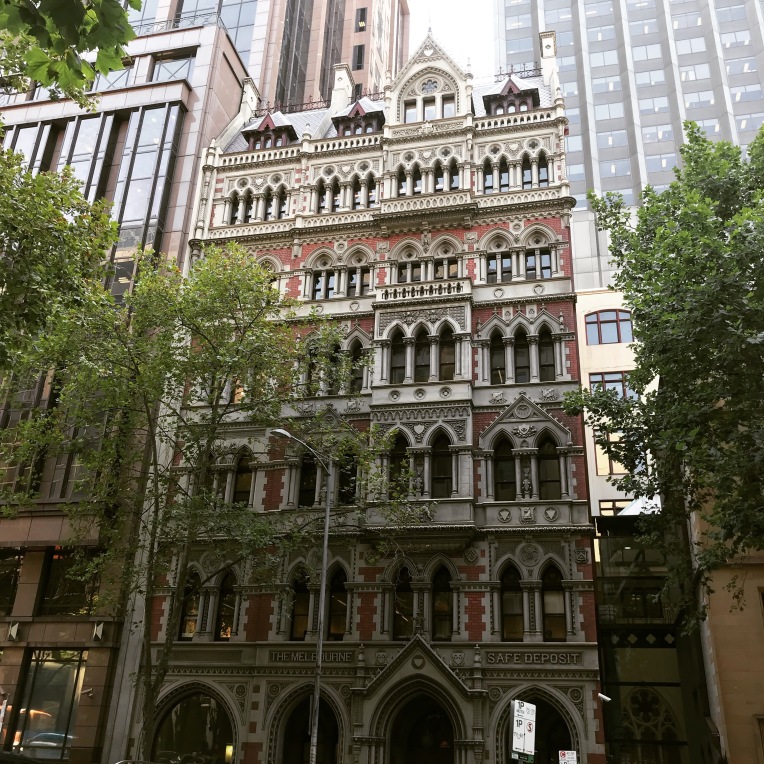
In 1989 ANZ found itself with three significant and beautiful gothic buildings. More than 20 million was committed to restoring the old buildings and a linking atrium was built.
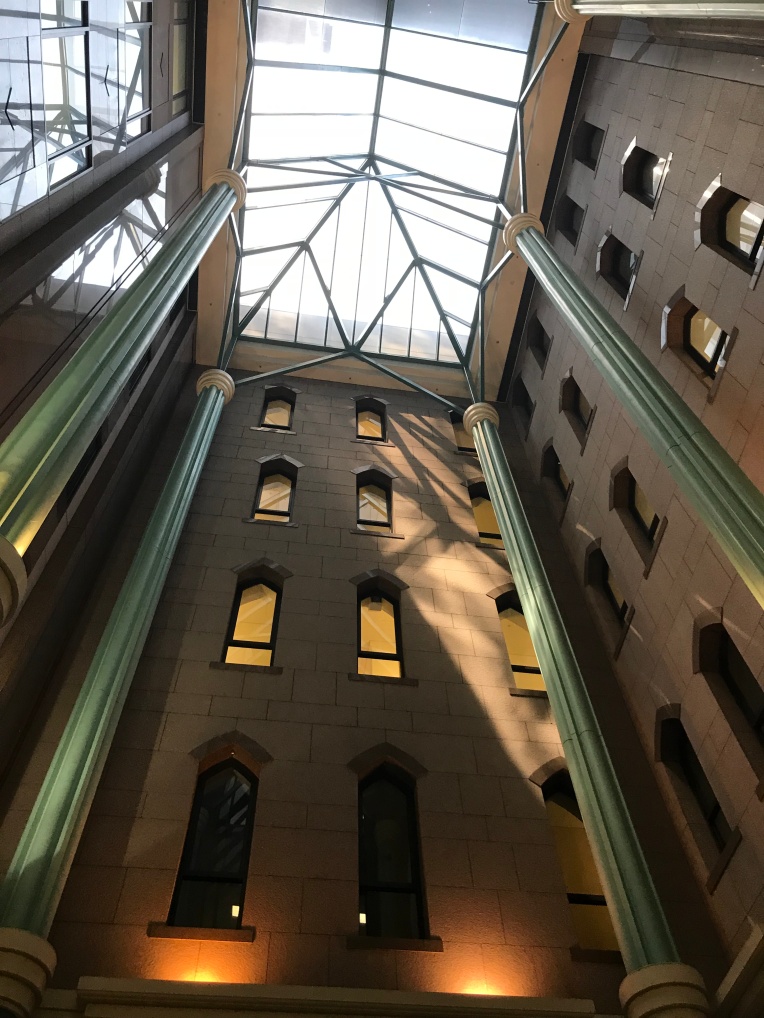
At the same time a modern ANZ headquarters was being built and it retains elements of the gothic style to mirror the original buildings and to bring them all in together as one complex. 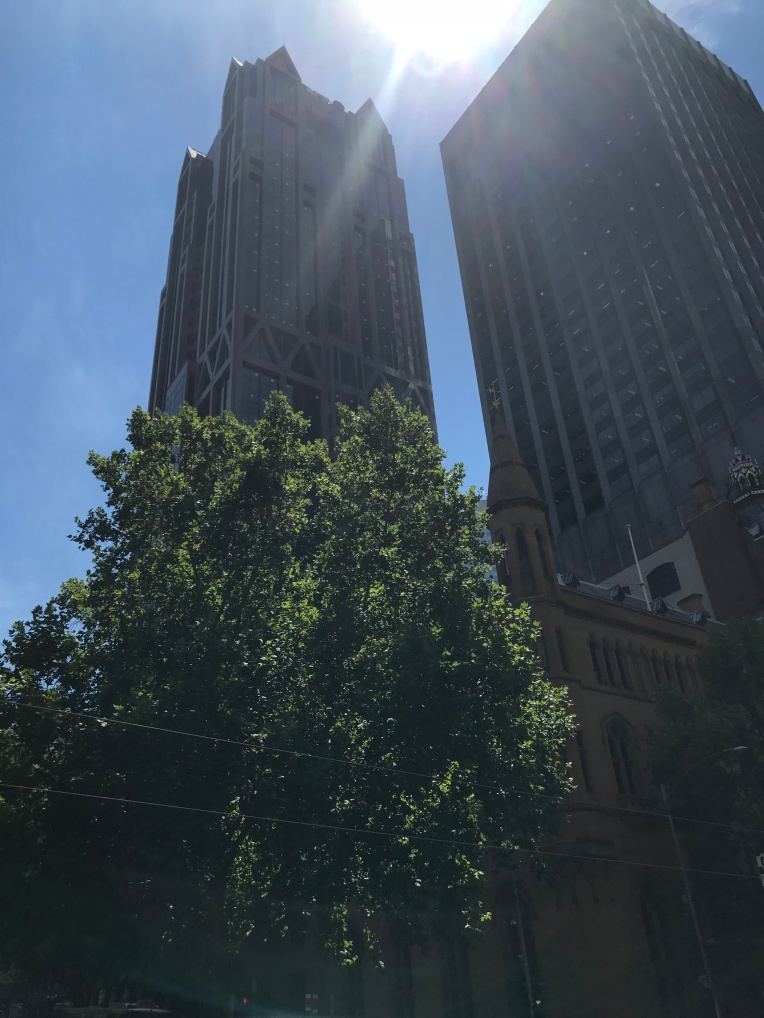
The gothic bank and its museum are a truly beautiful and fascinating building that are well worth a visit. I’m just pleased that this is the sort of thing I can go at look at in Melbourne. Exploring these sorts of buildings is why it can be so incredible to really look at your own city, to find the places that you’ve never noticed. To find the small corners of history that each city holds.
References:
Site visit 2018
ANZ’s Gothic Bank: A commitment to preservation (booklet)
The photos are mine.

Very interesting review and certainly something to add to my list of things to to when next in Melbourne.
LikeLiked by 1 person
Love the history and the architecture!!
LikeLiked by 1 person
I have included your blog in INTERESTING BLOGS in FRIDAY FOSSICKING at
https://thatmomentintime-crissouli.blogspot.com/2018/02/friday-fossicking-16th-feb-2018.html
Thank you, Chris
LikeLiked by 1 person
Astonishing building – breathtaking, in fact. Loved the little factoids you selected and I’m glad you left the full frontal shot, in its current context, dwarfed by the modern buildings, until near the end. That made a real impact. A pity some museums don’t like photography – I think it’s fine, provided it’s not flash or preventing other people from enjoying it. I agree about the gargoyles – off to get one now.
LikeLike
Thanks, glad you liked it. It’s a really lovely building. Enjoy your gargoyle 🙂
LikeLike
Any black and white photos of the various stages in the construction, especially showing craftsmen sculptors, scaffolding and horses at work? One would imagine the photo library to be extensive.
LikeLike
If you’re talking about the gothic bank, then yes quite possibly. I would suggest searching the State Library of Victoria’s collection if you are looking for some
LikeLike
Many thanks. One of my Victorian relatives from UK was involved in building projects in Oz, and I would love to see some photos showing how these guys built such magnificent buildings. I will certainly contact the State Library of Victoria as you suggested. Thanks again.
LikeLike
no problem, you can just look on their catalogue too. Lots of their photos are digitised.
LikeLike